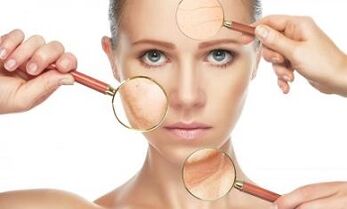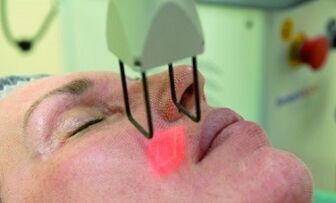
External manifestations of skin aging include the appearance of wrinkles, enlarged pores, and loss of skin freshness. The aging process in the early stages hardly manifests itself, and, therefore, does not attract much attention, but at the age of 25, new early signs of wilting begin to appear: the turgor decreases, the texture changes. Then, the skin gradually becomes thinner - vessels become visible, areas with hyperpigmentation appear.
In order to restore youthfulness to the skin, it is not enough to simply get rid of the visible manifestations of aging - it is necessary to restore the active activity of cells, their natural mechanisms of renewal and growth. Thus, the skin will not only come back looking fresh, but also look younger. Cosmetology made a real breakthrough in 2004, when a fractional photothermolysis method was presented for the treatment of age-related skin changes. This technology is proven and clinically tested - proven to be effective in wrinkle correction and skin rejuvenation.
Practical applications also show that fractional photothermolysis is easy to tolerate, safe and has high performance in removing cosmetic defects and restoring youth. Today it is one of the most reliable and promising methods of skin rejuvenation and firming, which is recognized as the "gold standard" in solving cosmetic problems. Moreover, it is a modern and safe alternative to skin lifting operations.
The course of the procedure, the patient's feelings

One integral and pleasant advantage of the fractional photothermolysis procedure is that it is painless - only the use of surface anesthesia is required, while sensation is limited to a slight tingling sensation in the laser-treated area.
Anesthesia is applied before the start of the session, which lasts an hour - the time varies depending on the size of the surface to be treated.
Specialists who carry out the procedure as soon as it is finished advising the patient, lubricate the skin with cream and provide detailed instructions for caring for it.
It should be noted that further medical treatment is not required for the skin and you can go home on your own.
Recovery period
If the previous surgical intervention required a long recovery period, then the fractional laser rejuvenation method does not take much time: no more than a week to return to the usual rhythm of life: time depends on the method of intervention (ablative, non-ablative). In the first two days after the procedure, the skin may swell slightly, on days 2-4, redness is visible, and on days 4-7, dead cells begin to peel off, freeing up healthy, beautiful skin to breathe and develop.
You can ensure that the fractional photothermolysis procedure makes your skin younger right away - after the ablative exposure method, the skin is immediately tightened, and in general, after a week, wrinkles begin to smooth, the skin becomes even, the skin texture improves, the oval of the face becomes clearer. In order to consolidate and maximize results, several procedures are required - they are carried out in a difference of about a month.
Fractional laser rejuvenation lasts for up to six months after all procedures have ended, and the effects last for several years. In many ways, outcomes are determined by a patient-led lifestyle - following a program to maintain youthful skin, prescribed by a doctor, helps significantly slow down its aging.
Combination with other methods of rejuvenation
Many patients, who wish to enhance the rejuvenating effect, wish to combine fractional laser rejuvenation together with the use of botulinum toxin injections and fillers. In this case, there are no contraindications - specific studies have confirmed the safety of the impact of fractional lasers on collagen and hyaluronic fillers. For those who want to do the laser rejuvenation procedure and Botox injection on the same day, there are also no restrictions, but in order for the rejuvenating effect to be the greatest, it is advisable to first complete the fractional laser rejuvenation process. . Most likely, the effect achieved does not require additional efforts to restore your skin's beauty and youthfulness.
Contraindications for this procedure
Fractional laser rejuvenation should not be performed if there are general therapeutic contraindications:
- Benign and malignant neoplasms in the treatment area.
- Oncological disease, radiation and chemotherapy.
- Dermatosis in the procedure area, photodermatosis.
- Family history of vitiligo.
- Herpes infection in the past month.
- History of keloid scars.
- Acute infectious disease or immune disorders.
- Chronic diseases (diabetes mellitus, systemic connective tissue disease, blood clotting disorders, thromboembolic disease. )
- New tanning or tanning in the last month.
- Use of oral retinoids in the last 6 months or use of topical dermatological agents with retinoids in the past 2 weeks.
- Pregnancy, breastfeeding.
- Psychiatric illness.
If there are contraindications to this procedure, you should temporarily abstain in order to ensure health safety, the same fractional laser rejuvenation procedure is completely safe.














































































